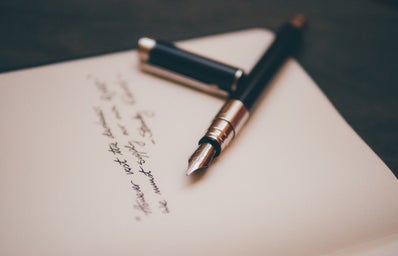A lot of print in print media has become more bland than it was in the past. Nowadays, you see a lot of fonts, such as Arial and Times New Roman. The only exception is headlines and logos, which are still appealing.
If we look at examples of newspaper headlines even less than a century ago, the print (except headlines) was still rudimentary. Even though times have changed and the world has gotten more advanced, I still wish we had kept the fancy print. It would have made the news or other media so much more interesting. However, this article will focus not just on headlines but also on calligraphy techniques used to achieve that unique scripture.
Traditional calligraphy
If we look into ancient Asian cultures, for example, the Chinese were the masters of ancient calligraphy. In the early stages (Shang dynasty 17th century BCE), they carved symbols into animal bones/shells. The calligraphy then was not only used for aesthetic purposes but rather for transactional ones. The traditional calligraphy we are all familiar with, though, was using ink out of an ink stone, written on rice paper (Xuan) using brushes made out of fine animal hair.
Meanwhile, during the last centuries of BCE, the Phonecians and Greeks also carved symbols in types of rock. The Romans took it up a notch with print etched in marble and limestone. Another example is the Rosetta Stone being carved in 3 different ancient scripts; now that was a work of art. The amount of dedication and precision for these prints was beyond impressive. Can you imagine one mistake being made and having to start all over again?
One style of calligraphy I want to point out is the calligraphy that emerged out of the Middle East. In the Arabian peninsula (post-6th century), the people had decorated mosques with calligraphy prints with the names of God, prophets, and other important figures. It was their unique way of identifying mosques compared to other sacred building types. It was their niche. To them back then, it may have been the basic form of writing, but to us in the modern day, it is unique compared to other forms of print. Who else could master gold letters painted out on black surfaces?
the printing press
Fast forward to the debut of a remarkable invention during the beginning of the Renaissance period — the Guttenberg Printing Press! It was founded in 1450 by Johannes Guttenberg and was a machine that worked with carved cutouts so no one had to print manually anymore. That meant it was much easier to print larger quantities of manuscripts and books. I was drawn to the press because I believe that the press is an earlier example of alphabet stamps we use today to make art.
missing the classical way to express words
Do you remember opening your favorite storybook as a child and seeing the first letter of the first page printed in a fancy script, and the rest of the words were not as fancy? I remember the O in “Once Upon a Time” being like that. It made me feel like I was reading a Brothers Grimm/Hans Christian Andersen story written in Gothic script. It also reminded me of the gothic print in Central Europe, roughly right about the time when the Guttenberg Press was invented. It was a true fairytale! Nowadays, when you open storybooks for kids, the words are large still, but the font is basic throughout the whole story. Now that was a major downgrade, and don’t get me started on basic fonts on news sites.
My conclusion is that words are not just about their meaning. It’s not just about what the word means but also about the word’s appearance. The way the word was written, the font, the ink, the thickness of strokes — all these factors are important. Words are not meant to be minimalist to go along with the minimalist vibe. They should be vibrant, bold, and not just straight like the letters on a keyboard. We can bring that back. We need to bring the fancy print techniques back.
Back when I was in elementary school, I was taught how to write in cursive. I don’t know if this is still taught anymore. But cursive is a nice gateway for the fancier prints of words to come. This should never go away.
Fortunately, though, there are great ways to learn calligraphy! There are numerous tutorials online to learn various fonts. Better yet, you can make your calligraphy! You heard that right. There is no right or wrong way to develop your printing skills. As long as it is authentic to your expression in art, that is what truly matters.


